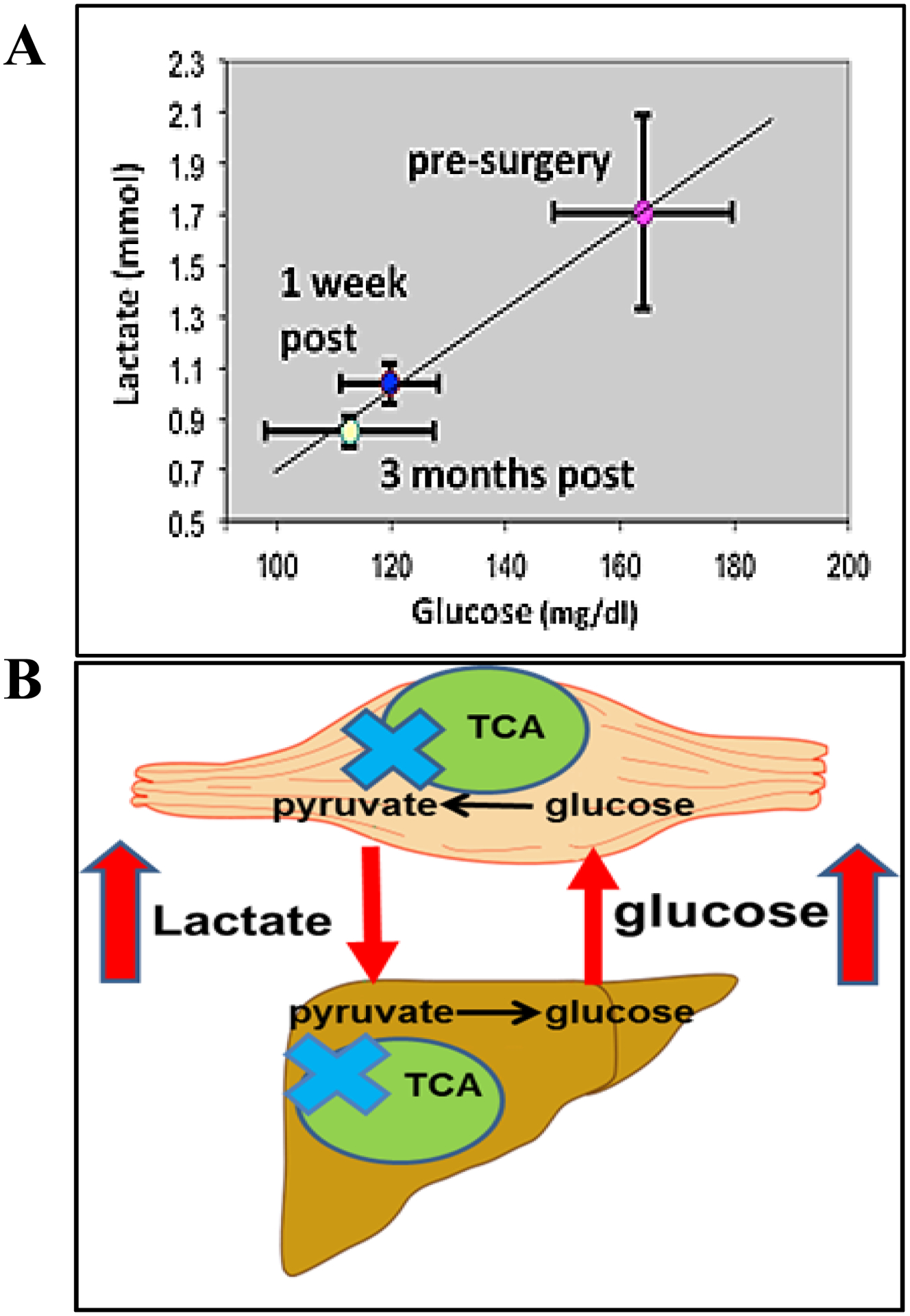Figure 2.

Panel A: A central tenet of our hypothesis is that complete glucose/pyruvate oxidation is impaired in severe obesity and type 2 diabetes (T2D), which increases blood lactate concentrations, drives liver gluconeogenesis, and elicits excessive hepatic glucose production which in individuals with T2D progresses to hyperglycemia. In support of this concept, when group means were plotted for patients with T2D before, 1 week after, and 3 months after Roux-en-Y gastric bypass a positive relationship between glucose and lactate was evident. Panel B: Schematic of the “Vicious Cori Cycle”. Skeletal muscle of subjects with obesity produces more lactate than lean subjects in the fasting condition and the elevated lactate drives increased glucose production. This stems from an initial lesion (blue X) in tricarboxylic acid cycle (TCA) function. The deficit in mitochondrial substrate utilization may thus be a precursor to metabolic inflexibility, glucose intolerance and subsequently T2D.
